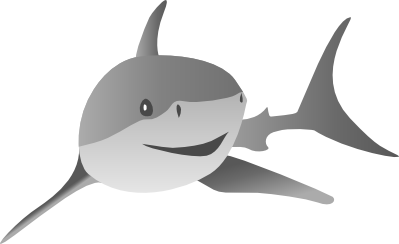Stopping Criteria¶
This concept tutorial gives some additional information on stopping criteria in Shark and notably a list of all those implemented. You will probably want to read the introductory tutorial on stopping criteria first.
A stopping criterion determines when optimization processes carried out by Optimizers should halt. Deciding when to stop is rather difficult. Typically, we would like to stop when the improvement between two optimization steps is small, i.e., \(|E(t+1)-E(t)|< \epsilon\) for an objective function \(E\), for example an error function computed on some training data, and some criterion for “smallness” \(\epsilon\). However, there is no guarantee that a solution obtained this way really is close to any local optimum – it could as well be just a saddle point or an area with small gradient.
When the optimization is employed for learning, an important aspect of stopping a trial is early-stopping for regularization (i.e., avoiding overfitting to the training set). A class of stopping heuristics therefore monitors the development of the error on a hold-out part of the data set – the validation error \(V(t)\). The idea is that learning should be stopped as soon as the validation error is not improving any more, assuming that from then on overfitting takes over. Even this error measurement is not perfect, since the validation error often follows a very noisy path during training. That fact has led to the proposal of several different stopping critera, and this tutorial will introduce those implemented in Shark.
The base class ‘AbstractStoppingCriterion<ResultSetT>’¶
Stopping criteria are represented by the abstract interface
AbstractStoppingCriterion. They are templatized on the ResultSet used:
| Types | Description |
|---|---|
ResultSet |
Defines the type of the result set used. This can be either the SingleObjectiveResultSet returned by most optimizers or a ValidatedSingleObjectiveResultSet that makes the validation error of the current time step available to the algorithm. |
Every stopping criterion extracts useful information from the result set at every time step and accumulates the information over time. Thus the interface consists only of two functions.
| Method | Description |
|---|---|
bool stop(ResultSet) |
Updates the internal statistics and stops when the stopping criterion is met. |
reset() |
Resets the internal state before a new trial is started. |
Applying a stopping criterion is simple. For an iterative optimizer we can simply write:
MyStoppingCriterion criterion;
MyOptimizer opt;
MyTrainingErrorFunction E;
opt.init(E);
do{
opt.step(E);
} while( !criterion.stop( opt.solution() ) );
List of Stopping Criteria¶
Todo
give the exact equations for all criteria in the table. also check the code again if they all really adhere to the Prechelt paper, i.e., .
| Model | Description |
|---|---|
| MaxIterations | Stops after a fixed number of Iterations. |
| TrainingError | Stops when the training error seems to converge, i.e., \(E(t-T)-E(t)< \epsilon\). |
| TrainingProgress | Tracks the progress of the training error over a period of time, i.e., \(\text{mean}\{E(t),\dots, E(t-T)\}/ \min_t E(t)< \epsilon\). |
| ValidatedStoppingCriterion | Evaluates the validation error and hands the validated result to another criterion, see the introductory tutorial on stopping criteria. |
| GeneralizationLoss | Calculates the quotient \(V(t)/\min_t E(t)-1\) as a relative measure of the gap between training and validation error. |
| GeneralizationQuotient | Uses the quotient of training progress and generalization loss. |


